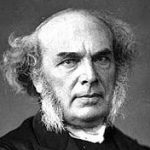Week of December 31, 2017
The Point: Jesus brings healing to our lives.
Only Believe: Mark 5:22-24,35-43.
[22] Then came one of the rulers of the synagogue, Jairus by name, and seeing him, he fell at his feet [23] and implored him earnestly, saying, “My little daughter is at the point of death. Come and lay your hands on her, so that she may be made well and live.” [24] And he went with him. And a great crowd followed him and thronged about him. [35] While he was still speaking, there came from the ruler’s house some who said, “Your daughter is dead. Why trouble the Teacher any further?” [36] But overhearing what they said, Jesus said to the ruler of the synagogue, “Do not fear, only believe.” [37] And he allowed no one to follow him except Peter and James and John the brother of James. [38] They came to the house of the ruler of the synagogue, and Jesus saw a commotion, people weeping and wailing loudly. [39] And when he had entered, he said to them, “Why are you making a commotion and weeping? The child is not dead but sleeping.” [40] And they laughed at him. But he put them all outside and took the child’s father and mother and those who were with him and went in where the child was. [41] Taking her by the hand he said to her, “Talitha cumi,” which means, “Little girl, I say to you, arise.” [42] And immediately the girl got up and began walking (for she was twelve years of age), and they were immediately overcome with amazement. [43] And he strictly charged them that no one should know this, and told them to give her something to eat. [ESV]
“Literary Context. This is the third and fourth in a series of four powerful miracles that go beyond anything Jesus had done before during His Galilean ministry. In the previous two episodes Jesus commanded the forces of nature [4:35-41] and overcame massive demonic possession [5:1-20]. Now, in this double episode, He heals a long-term chronic disease that has baffled physicians [5:25-34] and defeats the greatest enemy of all – death itself [5:21-24,35-43]. The four passages are also linked literarily by boat journeys. After calming the storm at sea [4:35-41], Jesus arrives on the eastern shore of the lake, where He exorcises the Gerasene demoniac [5:1-20]. Now He returns to the western shore [5:21]. Another possible connection between the three healings in Mark 5 is the issue of ceremonial impurity, a topic Jesus will address in chapter 7:1-23. The demoniac was possessed by a defiling spirit and lived in tombs, whose corpses rendered him unclean [Isa. 65:4]. The demons were cast into pigs, which were ceremonially unclean [Lev. 11:7-8]. The woman in the present episode has a blood disease that renders her ceremonially impure [Lev. 15:19-31; Ezek. 36:17]. Similarly, the little girl’s dead body would have passed on ceremonial impurity to anyone who touched it [Num. 19:11-13,22; Hag. 2:13]. In each case Jesus’ healing touch brings restoration and wholeness, reversing the results of defilement and ostracism. It must be added that Mark does not explicitly refer to the question of impurity in the texts, so it is unclear how important the theme was to him.
Main Idea. The healings of Jesus, which have played such a prominent role in revealing Jesus’ messianic authority, now reach a climax in Mark’s gospel as Jesus heals a long-term chronic disease and then raises a girl from the dead. The miracles demonstrate that the arrival of the kingdom of God brings hope of restoration and renewal to a fallen creation. Jesus’ special concern for women also illustrates the countercultural values of the kingdom.
Structure. This is the second of Mark’s intercalations, where one episode is “sandwiched” in the middle of another [cf. 3:20-35; 6:7-30; 11:12-25; 14:1-11, 53-72]. Sometimes the two stories share a common theme; in others, one part interprets the other. The intercalation can also provide dramatic effect, slowing the narrative and creating a temporal delay. Here the temporal delay is important, since the death of the little girl takes place during this period. The common theme of the two scenes is faith. Jesus announces to the woman that her faith has healed her and calls Jairus to greater faith in the face of apparent hopelessness at the death of his daughter. There are both contrasts and similarities between the two accounts. The main contrast is in the social status of the two supplicants. Jairus is a Jewish male and a leader in his community at the top of the social ladder. The woman is poor and helpless, and is an outcast on the lower rungs of society. She remains chronically ill, despite having spent all she had on doctors. Her bleeding disorder renders her ceremonially impure and so separated from Israel’s religious life. Equally striking are the parallels between the two episodes: both concern females who are in hopeless situations (chronic disease and death); both situations relate to ceremonial impurity (the woman’s condition and the little girl’s dead body); both are identified as “daughters,” and a period of twelve years is significant for each (the onset of the woman’s disease; the age of the girl); the healing in both involves Jesus’ touch and is linked to faith. Jesus tells the woman that your faith has made you well and encourages Jairus not to fear, but to persevere in faith. These lessons in faith will stand in stark contrast to the episode that follows, where Jesus’ hometown suffers from a complete lack of faith [6:6].
Explanation of the Text. [21] Jesus now returns by boat to the western side of the lake. He is back in Jewish territory. This is evident from the presence of the synagogue leader and Jesus’ Aramaic words in verse 41. The appearance of a large crowd renews the theme of Jesus’ popularity during His Galilean ministry. He was beside the sea indicates that the crowd was waiting for Him as the boat landed, emphasizing His popularity. [22-23] A synagogue ruler was an administrator of the synagogue, maintaining the facilities and organizing worship services. It is unusual to have an individual named in a miracle story; that feature occurs in Mark only here and in the case of Bartimaeus [10:46]. While some suggest the name is a later addition, it could just as easily be explained as a historical recollection in light of the enormity of the miracle. Jairus fell at his feet, an action that can indicate entreaty [7:25] or submission [3:11; 5:6]. While both are present here, the former is most prominent. Jairus is helpless in the face of his daughter’s illness and begs Jesus for help. Jairus’s approach to Jesus reminds the reader that not all of Israel’s leaders oppose Jesus. Israel does not stand uniformly against Jesus, but is divided in its response. The father’s heart is breaking as he sees his little girl dying. Only Luke [8:42] notes that this was Jairus’s only daughter, making the potential loss even more profound. Jairus requests that Jesus come and lay your hands on her, a common means of healing both in Mark’s gospel and in the ancient world. [24] As Jesus heads off to Jairus’s home, the crowd appears again as a character. Crowds in Mark are both indicators of popularity and impediments to those trying to reach Jesus. The latter is most prominent here. The mobbing crowds prepare the reader for Jesus’ compassion and His sensitivity to the woman’s desperate touch. [35] One person’s joy is another’s agony, as word reaches Jairus that his daughter has now died. The restoration of one daughter [34] has resulted in the death of another. Yet even this tragedy is not outside of God’s sovereign purpose, and the delay caused by the interruption will result in an even greater miracle. A similar situation occurs in John’s gospel. Jesus’ delay in coming to Lazarus results in his death; but his subsequent raising results in greater glory for God [John 11:4,14,40,42,45]. The rhetorical question from the messengers, Why trouble the Teacher any further, indicates the hopelessness of the situation. Even a great teacher and healer like Jesus surely cannot cheat death itself. [36] Jesus overhears and ignores what the messengers have said. Jesus calls upon Jairus not to fear, but to believe. Both fear and believe are present imperatives. Jairus is already afraid and so Jesus tells him to put away that fear. The present tense is appropriate here because both fear and faith are ongoing actions. Jairus came to Jesus out of fear for his daughter’s life and faith in Jesus’ healing power. Now Jesus calls him to put aside the greater fear caused by the girl’s death and to progress to even greater faith. [37] This is the first reference to Peter, James, and John as part of an “inner circle” of disciples who will accompany Jesus at several key points in His ministry: here, at the transfiguration [9:2], and in Gethsemane [14:33]. Andrew appears with them at the Olivet Discourse [13:3]. The four (with Andrew) were first called by Jesus from their fishing occupation [1:16-20] and then appointed together with the Twelve [3:13-19] and will soon be sent to preach and heal [6:6-31]. Why these three are singled out here is not stated. It may have been the limited space in the home or perhaps the others were left to keep the crowd at bay. In any case, the three will serve as key witnesses to this remarkable miracle. [38-39] The weeping and wailing of the people is evidence that the child has died. The crowd likely included paid mourners, playing flutes and singing dirges, a common practice in the ancient Near East [Matt. 9:23; 11:17; Luke 7:23]. The volume and intensity of the mourning was viewed as an indicator of the great love for the deceased. The commotion refers to the noise and confusion as mourners arrive and news of the girl’s death spreads. Jesus, however, always in control, calls for a halt to the noise and tumult, rhetorically asking, Why are you making a commotion and weeping, and assuring the crowd that the girl is only sleeping. “Sleep” is a common euphemism for death in the New Testament, pointing to its temporary nature for believers [John 11:11-14; 1 Cor. 15:51; 1 Thess. 4:13-14]. While in these passages, believers will awake to resurrection life, Jesus had in view “sleep” as a temporary pause in the girl’s mortal life. [40] The mourners, who know the child is dead, react with scorn at Jesus’ suggestion. Their immediate change from mourning to laughing indicates the superficiality of their grief. The mocking also prepares us for the miracle, contrasting the confident assurance of Jesus with the derision of those insensitive to God’s work. These are the ones who have eyes but cannot see and ears but cannot hear [4:12]. Fools mock, while the Son of God prepares to do the impossible. The scene also anticipates the mocking of Jesus in 14:65 and 15:16-20, which will be refuted by Jesus’ rising from the dead. Jesus takes charge of the situation and puts the noisy crowd out. Jesus allows entry only to the parents and the three disciples. [41] As elsewhere, Jesus heals with a simple touch [1:31,41; 6:5; 7:32; 8:23,25] and a command [1:41; 2:11; 10:52]. He uses no prayers, incantations, or rituals, but rather speaks with His own messianic authority. Contrast this with the prayers and rituals performed by Elijah and Elisha in the two closest Old Testament parallels [1 Kings 17:19-22; 2 Kings 4:29-35]. Significantly, the laws of impurity are reversed. Jesus’ touch does not render Him ceremonially unclean, but rather brings restoration and healing to the afflicted. [42] The girl gets up immediately and begins to walk around. These actions confirm the reality of the miracle. Mark probably mentions the girl’s age to explain how she could walk about: she was not an infant, but a grown child. [43] Jesus is back in Jewish territory and so the command to silence returns. Of course, it will be impossible to keep, since the whole village certainly knew that the girl was dead. The point, however, is that Jesus again seeks to dampen messianic expectations and to shape His ministry on His own timetable. The command to give the girl something to eat is probably intended to be proof of her full recovery. It also reveals Jesus as a compassionate healer who is personally concerned about the girl’s welfare.
Theology in Application. The Authority of Jesus to Bring Restoration and New Life. Throughout the first half of Mark’s gospel, Jesus’ authority as the announcer and inaugurator of the kingdom of God is on center stage. The miracles serve as “snapshots” of the coming kingdom, the restoration of creation, and the reconciliation of God and humanity. In the first cycle of miracle stories in chapters 1-3, the exorcisms symbolize the victory of God’s kingdom over Satan’s realm; the healings provide a glimpse of the future restoration of fallen humanity; and the forgiveness of sins previews the reconciliation between God and His people. In this second cycle of miracles in 4:30-5:43, this restoration theme intensifies. The calming of the storm shows that the Messiah had authority over the forces of nature. He is the one who will restore a broken world. The exorcism of the Gerasene demoniac teaches that even the most powerful of Satan’s forces stand helpless before the authority of the Son of God. Now, in the intercalated episode of Jairus’ daughter and a sick woman, Jesus demonstrates His authority over the most persistent of diseases and even death itself. By raising this little girl, Jesus provides a preview of the coming victory that will be achieved through His sacrifice for sins [10:45] and resurrection from the dead. The theme of conquest over death has deep roots in the Old Testament. When God placed Adam and Eve in the garden of Eden, He warned them that if they ate from the tree of knowledge of good and evil, they would surely die [Gen. 2:17]. Their decision to disobey God resulted in immediate spiritual death and eventually physical death. From a biblical worldview, human death is not a natural part of an endless “cycle of life.” It is a tragic intrusion into God’s created intention for humanity, and aberration resulting from a fallen creation [Rom. 5:12]. Death is the consequence and penalty of human sin [Rom. 6:23]. Yet from the moment of humanity’s fall, God launched a rescue plan to restore true life to His wayward people. The Old Testament prophets predicted the day when God would swallow up death forever [Isa. 25:7-8; cf. 26:19; Dan. 12:2,13]. For the New Testament writers, that day has been inaugurated through the life, death, and resurrection of Jesus Christ. Jesus’ death paid the penalty for sin, and His resurrection is the beginning of the end-time resurrection of the dead. By virtue of identification with Him in His life, death and burial, believers are spiritually raised with Him into the new age of salvation and seated with Him at the right hand of God [Rom. 6:3-6; Eph. 2:1-10; Col. 2:12; 3:1-4]. This is the victory Paul celebrates in 1 Corinthians 15. By virtue of Christ’s resurrection, death is swallowed up in victory [1 Cor. 15:54]. Like all such resuscitations in the Old Testament and New Testament, the raising of Jairus’s daughter is not a true “resurrection.” True resurrection means the renewal to immortal, imperishable life [1 Cor. 15:53-54]. Jesus Himself is the firstborn from the dead [Col. 1:18; cf. Rev. 1:5]. Jairus’s daughter, like these others, is raised to mortal, perishable life. These resuscitations are therefore a preview and foreshadowing of Jesus’ coming death and resurrection, and the immortal, eternal life believers receive through their identification with Him. Like the other miracles in Jesus’ ministry, they are “snapshots” of the coming kingdom of God.
The Need for Faith. The second major theme of the passage is the faith that Jesus expects from those who follow Him. Faith is recognizing that there is nothing we can do to save ourselves and expressing our full dependence on God’s saving power. Jairus demonstrates faith by coming to Jesus, despite the fact that to do so could mean ostracism from the religious establishment of Galilee. The woman’s faith is demonstrated through her approach to Jesus, despite her shame in her condition and fear of rejection by others. Both believe Jesus has the power to save. Faith is not a single act, but means enduring in faith. When Jairus’s daughter dies, Jairus faces an even greater challenge. Jesus calls him away from his fear to even greater faith in His power to raise the dead. These two episodes on the need for faith stand in contrast to episodes that frame it on either side. Jesus rebukes the disciples for their failure to believe in the face of the angry storm [Mark 4:40], and the townspeople in Gerasa respond to Jesus’ amazing exorcism with rejection instead of faith [5:18]. In the next episode, Jesus will face rejection from His own people in His hometown of Nazareth. While everyone is amazed at Jesus’ miraculous power throughout His Galilean ministry, in that episode Jesus Himself will be amazed at their lack of faith [6:6]. For Mark’s readers (as for us), these lessons on faith remind us that the Christian life is not always a comfortable walk in the park. It entails trials, suffering, and persecution. When the pressure comes – whether through persecution, illness, accidents, loss of job, betrayal by a friend, a broken relationship, or the death of a loved one – God calls us to turn to Him in hope and faith, recognizing that He has a purpose and that, in the end, nothing can separate us from the love of God that is in Christ Jesus our Lord [Rom. 8:39].” [Strauss, pp. 226-229, 232-237].
Questions for Discussion:
- Who is Jairus? Why does he come to Jesus? What do you think Jairus was thinking and feeling when Jesus delays in order to heal the woman? Imagine Jairus’ sorrow and grief when news of his daughter’s death comes. Would he have been angry at Jesus for the delay and resentful of the woman for interfering Jesus? How do you respond to interruptions and delays when you feel you are in a desperate situation?
- What do we learn about Jesus in this passage? About His power? His compassion? What key spiritual truth is He teaching here? Recognize that this is the same message He is telling each one of us in whatever life situation we face. Pray for strength to obey Jesus’ command: Do not fear, only believe.
References:
The Gospel According to Mark, James Edwards, Eerdmans.
Mark, Robert Stein, ECNT, Baker.
Mark, Mark Strauss, Zondervan.

















